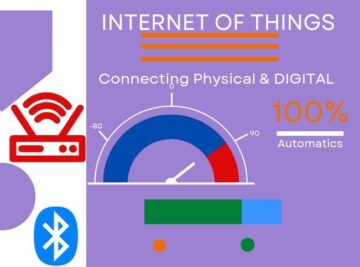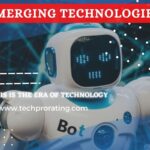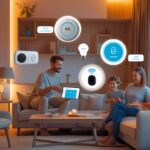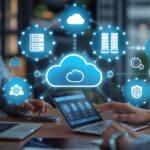The Internet of Things (IoT) is a network of physical devices, vehicles, home appliances, and other items that are embedded with electronics, software, sensors, and connectivity which enables these objects to connect and exchange data. IoT has become one of the most exciting technological advancements of the 21st century, as it promises to bring together the physical and digital worlds in ways never thought possible. The IoT is not just a trend, but a revolution that is changing the way we live and work, by making devices smarter and more connected.
The concept of IoT dates back to the 1980s, but it was only in the last decade that it gained traction with the rise of smartphones and cloud computing. Today, the number of connected devices is rapidly growing, with an estimated 25 billion devices expected to be connected to the internet by 2025. IoT has the potential to make our lives easier, safer and more efficient, by giving us real-time access to information and control over our devices from anywhere in the world.
One of the key drivers behind the growth of IoT is the increasing availability of low-cost, high-performance sensors and other hardware components. These components, combined with advances in wireless communication technologies, cloud computing and artificial intelligence, have enabled the creation of smart devices that can sense and respond to the environment. For example, IoT-enabled sensors can be used to monitor temperature, humidity, light and sound, which can then be used to control heating, cooling, and lighting systems, or to track and manage the quality of food and other perishable items.
The impact of IoT extends far beyond the home, however. In industries such as manufacturing, transportation, and healthcare, IoT is transforming the way businesses operate. In the manufacturing industry, for example, IoT is being used to monitor and optimize production processes, track and manage inventory, and improve worker safety. In the transportation sector, IoT is enabling the development of smart cities, with connected vehicles, traffic management systems and smart public transportation systems.
In healthcare, IoT is helping to revolutionize patient care by enabling remote monitoring of vital signs and other health indicators. For example, IoT-enabled wearable devices can be used to track and manage chronic conditions, such as diabetes or heart disease, by collecting data on blood sugar levels, heart rate, and other health metrics. This data can then be transmitted wirelessly to healthcare providers, who can use it to monitor patient health and provide personalized treatment.
Another area where IoT is having a significant impact is in energy and environmental management. IoT-enabled devices can be used to monitor and control energy use in buildings and homes, reducing energy waste and lowering greenhouse gas emissions. For example, smart thermostats can be programmed to automatically adjust heating and cooling settings based on occupancy patterns and weather conditions, reducing energy consumption and costs.
Despite the many benefits of IoT, there are also challenges that must be addressed in order to fully realize its potential. One of the biggest challenges is ensuring the security of connected devices, as they can be vulnerable to hacking and other forms of cyber-attacks. This is especially true for devices that are critical to our safety and security, such as medical devices or security systems. It is essential that manufacturers and developers take steps to ensure that these devices are secure, by using encryption and other security measures, and by regularly updating their firmware to fix vulnerabilities.
Another challenge is the need for standardized protocols and platforms, to ensure interoperability between different devices and systems. Without standardized protocols and platforms, it will be difficult for devices from different manufacturers to work together, limiting the potential for IoT to deliver real-world benefits. There is also a need for regulations to ensure that IoT devices meet certain standards for data protection, privacy, and security











